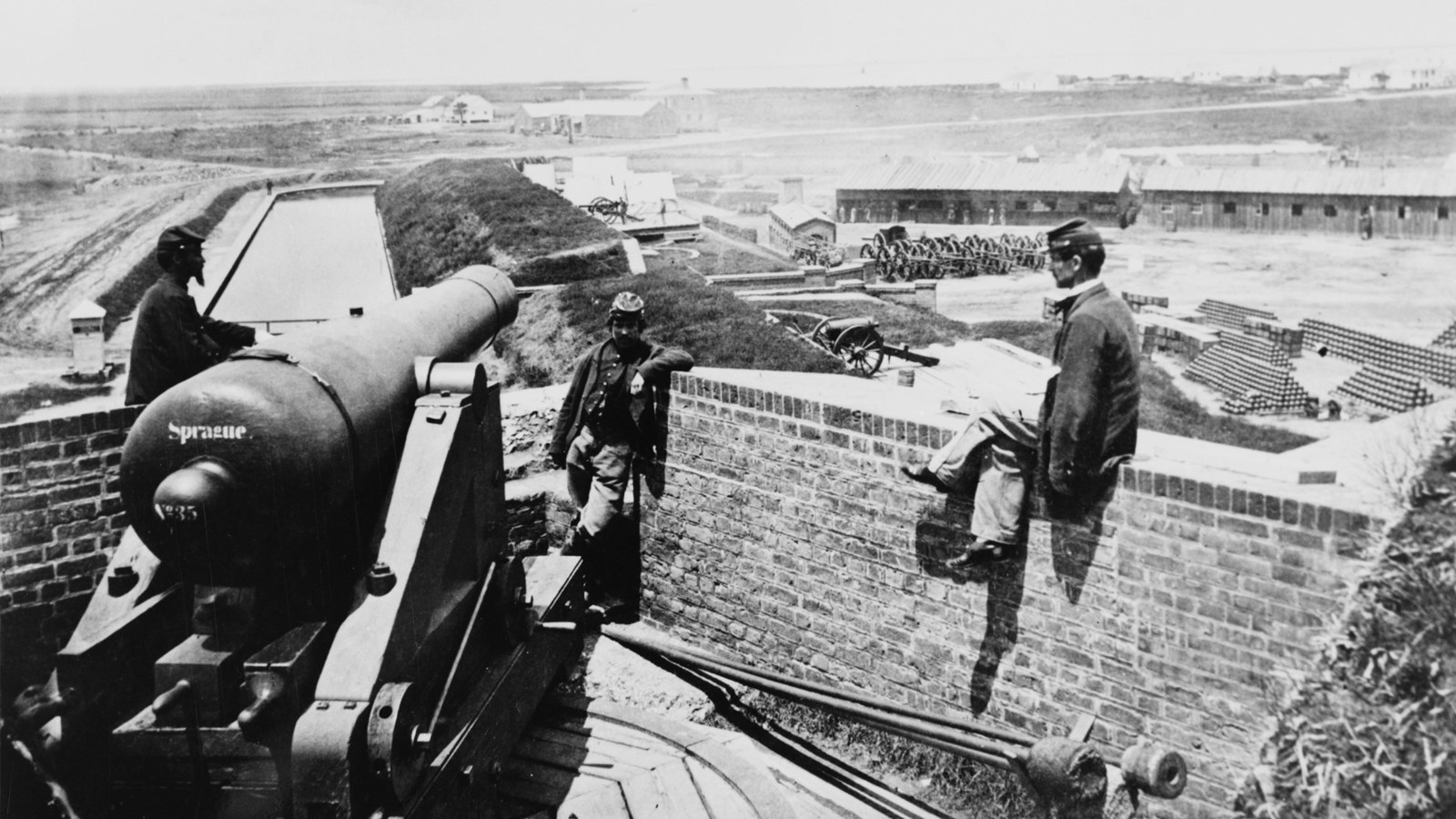Last updated: December 6, 2024
Place
Workers' Village

NPS
Wheelchair Accessible
The construction of Fort Pulaski would be quite challenging even with today’s modern technology, but in the early 19th century it was truly a monumental task. It took 18 years to both prepare the unsuitable salt marsh for construction and to build the fort. Cockspur Island, where the fort sits, was a lot more remote than it is today. There were no roads or rail lines leading from Savannah to the island, which lies about fifteen miles east of the city. All travel to and from the island was by boat via the Savannah River, the Atlantic, or the numerous creeks which form a labyrinth throughout the low country. For this reason, it would be impractical to shuttle the work force back and forth from Savannah.
In order to support such a grand project on a long-term basis, housing for workers had to be built on the island. The Workers’ Village had three main clusters of buildings and was constructed in a way that divided workers. The officers’ houses, customs house, workshops, and laborers’ quarters (occupied by white and enslaved laborers) were situated on the northern part of Cockspur Island, around where Battery Hambright is today. The laborers' quarters were within sight of the officers’ and overseers, perhaps to exert more control over workers.
The mechanics’ quarters, boarding house, and kitchen were grouped closest to the fort, adjacent to the modern-day parking lot. Mechanics refers to craftspeople such as masons, carpenters, and blacksmiths. The third grouping of buildings were built on the south coast of the island, but little is known about these because the area is difficult to access.
Water cisterns are all that remains of the construction village. The buildings were destroyed during the 1881 hurricane.
For more information on the Workers' Village.
-
Construction Village Ranger Talk
Listen to a park ranger talk about this tour stop.
- Credit / Author:
- NPS/Niles
- Date created:
- 07/01/2020
